Roasted Garlic and Rosemary Cloverleaf Rolls are pretty and delicious rolls to add to your dinner menu!
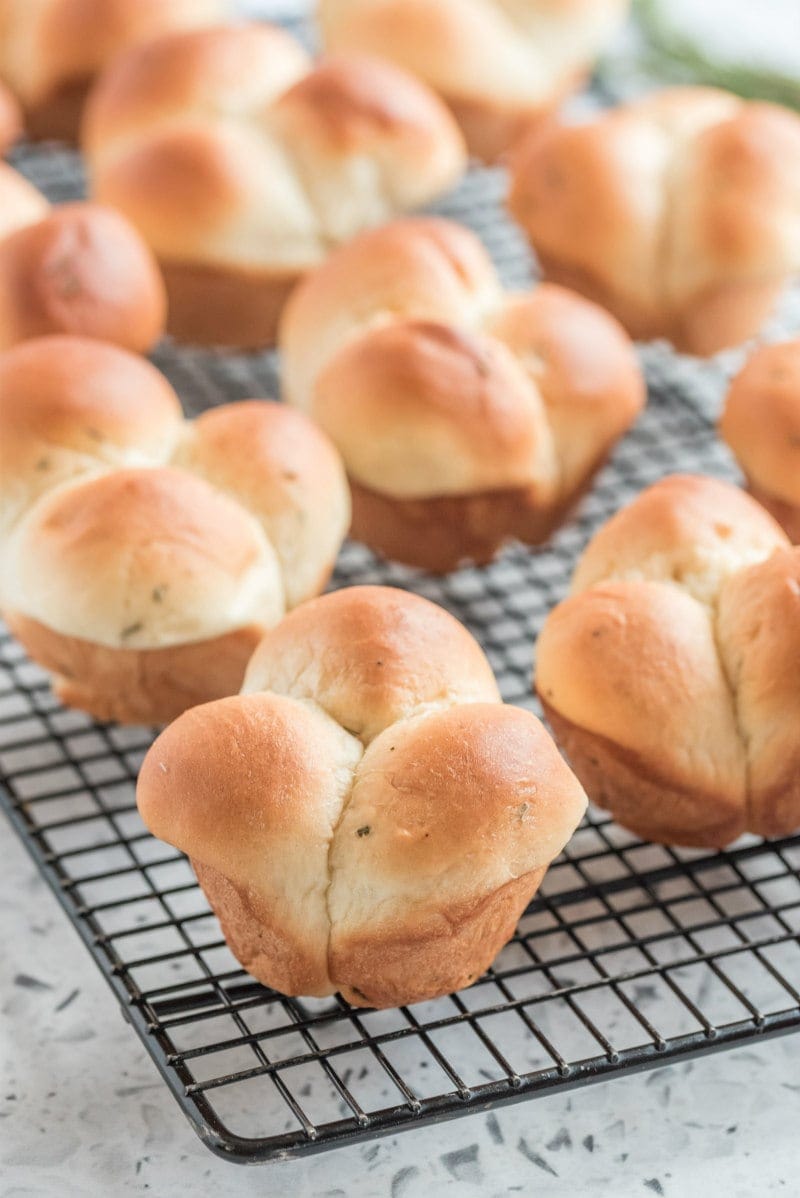
Make these Roasted Garlic and Rosemary Cloverleaf Rolls early in the day, and then heat them up a little bit when it’s time for serving. They do take a bit of time to make, but they’re totally worth the effort. These are buttery, pull-apart rolls. Everyone loves them! The recipe makes 12 rolls, but can easily be doubled to make 24.
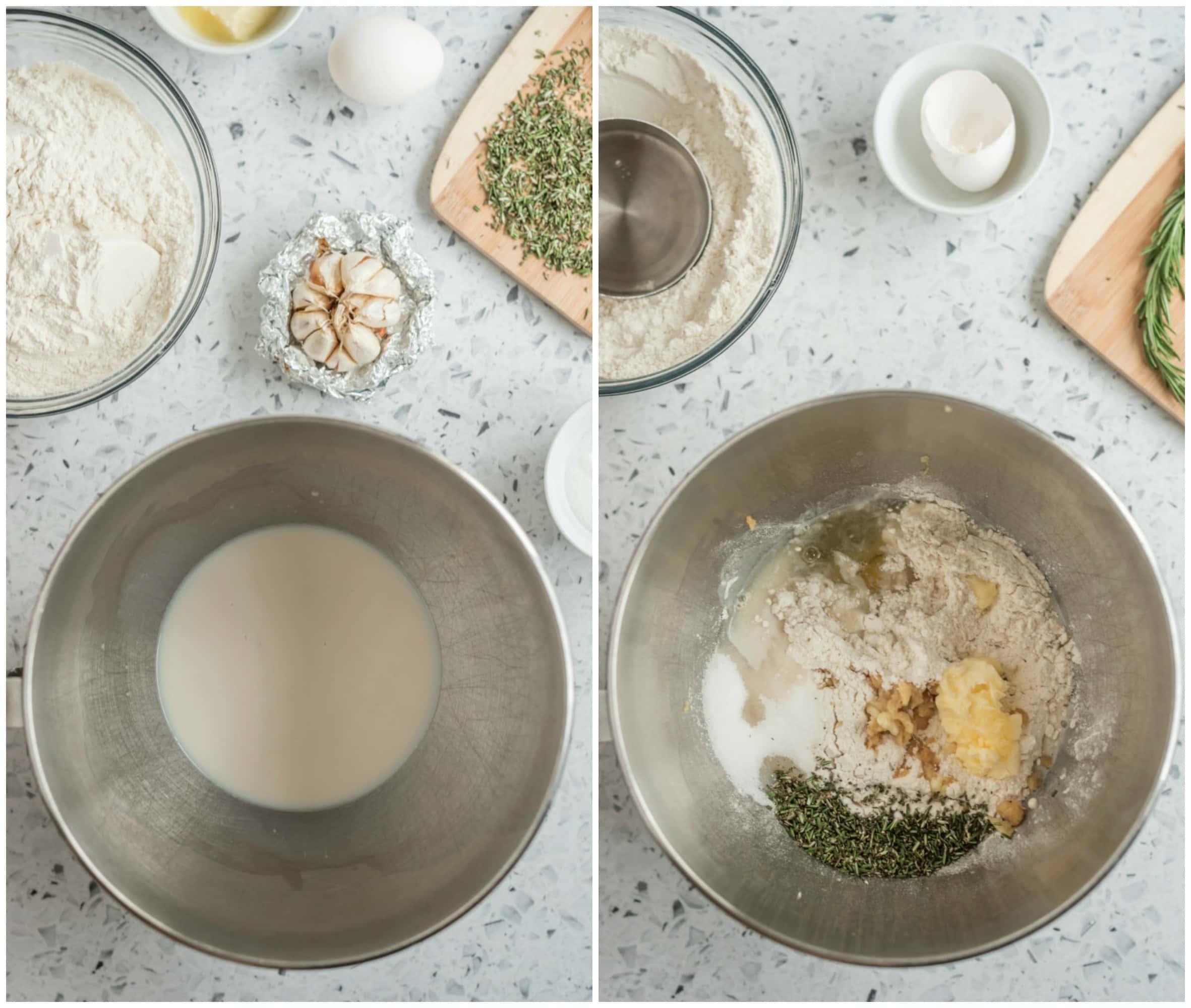
How to make Roasted Garlic and Rosemary Cloverleaf Rolls:
The first thing you’ll do is roast the garlic. Peel away the paper thin white skin from the garlic, wrap the head of garlic in foil and bake for one hour. When the garlic comes out of the oven, it becomes very soft. You’ll squeeze the softened, roasted garlic out of each clove of garlic and put it into a bowl to set aside. Roasting the garlic can be done a day or two ahead of making these rolls.
Next, you’ll dissolve the yeast in warm water. Then you’ll add the garlic pulp, flour, butter, sugar, salt, egg and rosemary. This is beaten with a mixer, and then more flour is added to create the dough.
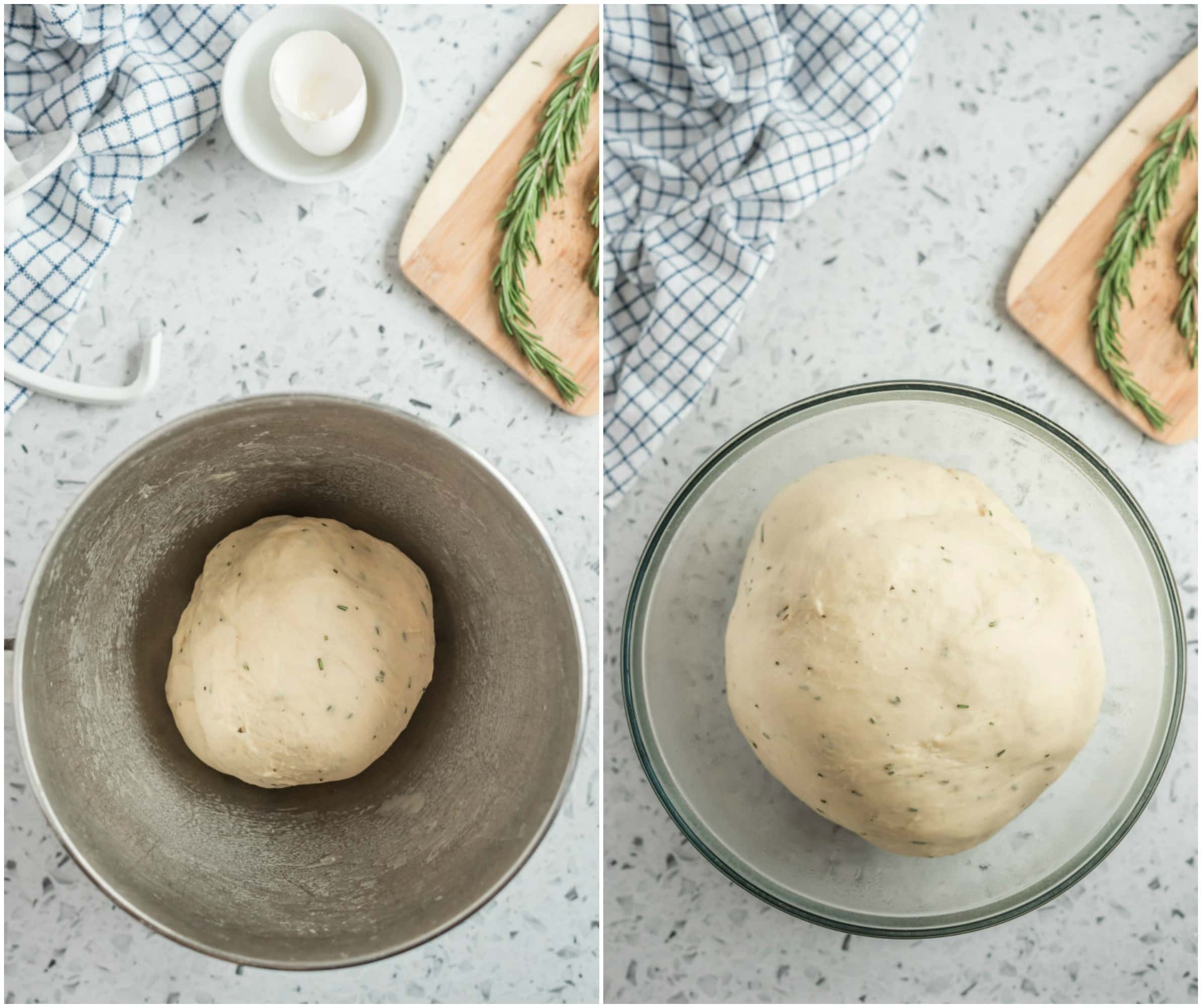
The dough is kneaded until it’s smooth and elastic. Then it’s placed into a greased bowl. That bowl is covered and placed into a warm, dry place to let rise for about an hour- until doubled in size.
What’s a good place for dough to rise?
If you’re in need of a warm place for rising, turn your oven on to 400 degrees F. for 1 minute. Turn the oven light on too. Then turn off the oven (leave the light on) and place your dough inside the warmed oven for rising. The light keeps it just warm enough for a good rise.
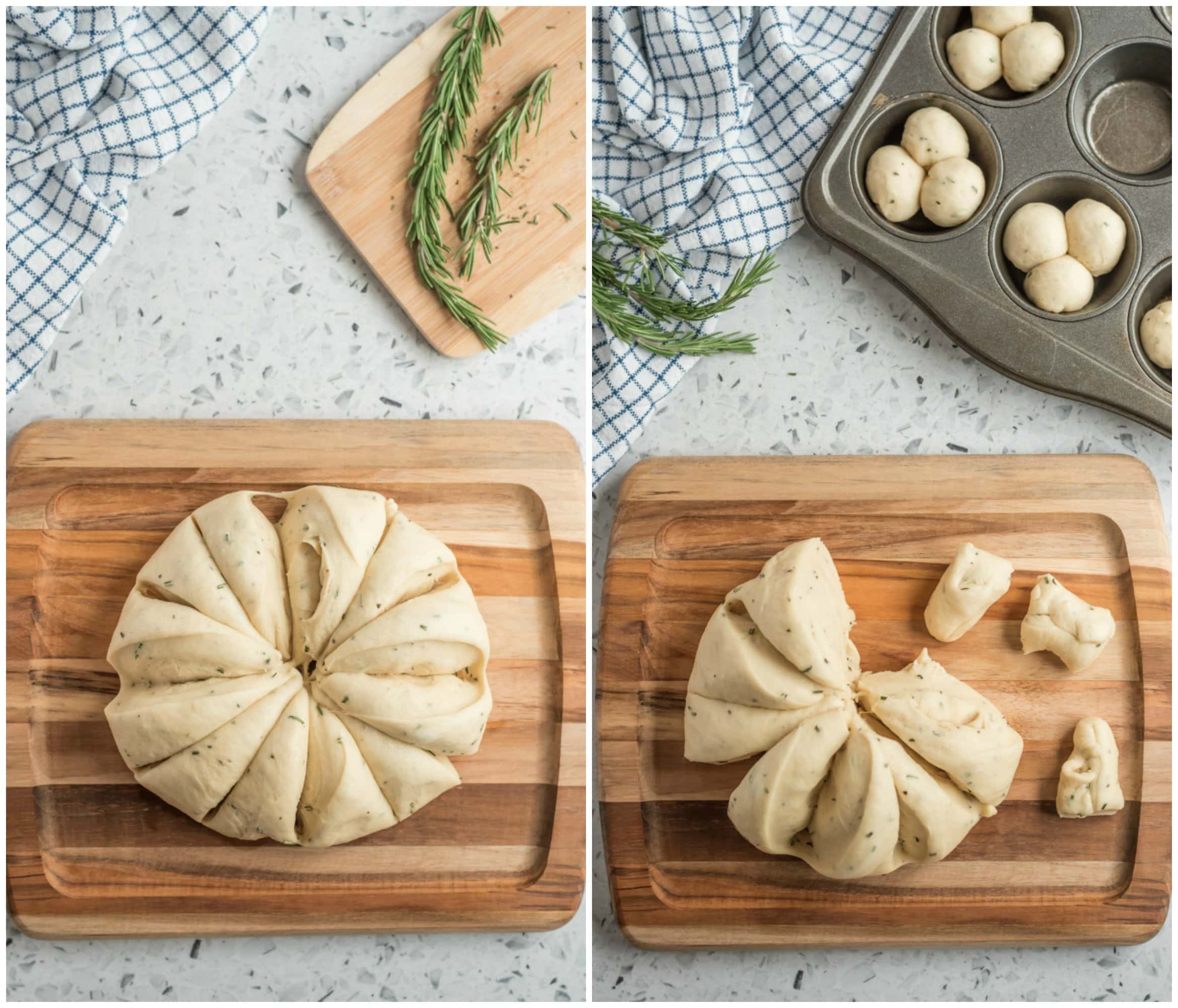
Then the dough is punched down and divided into 12 equal portions. Each portion is then divided into 3 pieces.
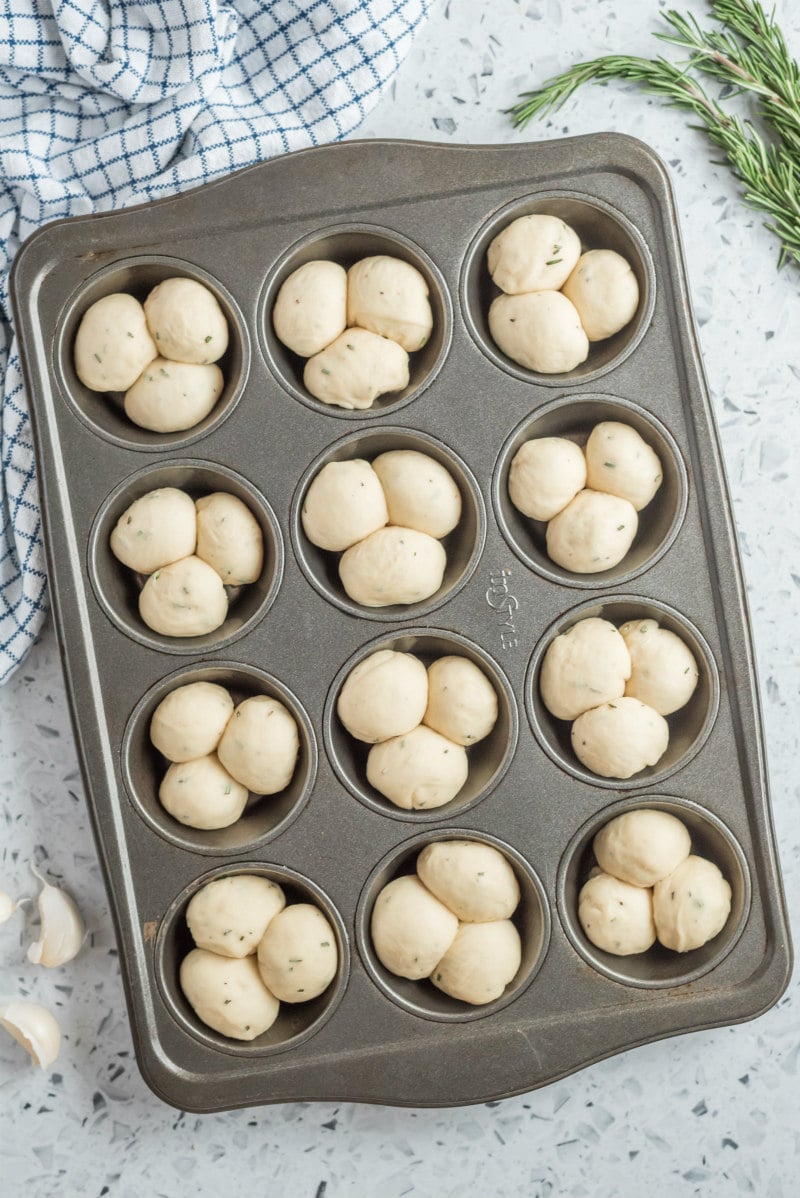
Each piece is rolled into a ball and placed into a muffin cup (3 balls per muffin cup). The muffin tin is then covered and set aside to rise for about 30 minutes. The tops of the risen rolls are brushed with melted butter before baking.
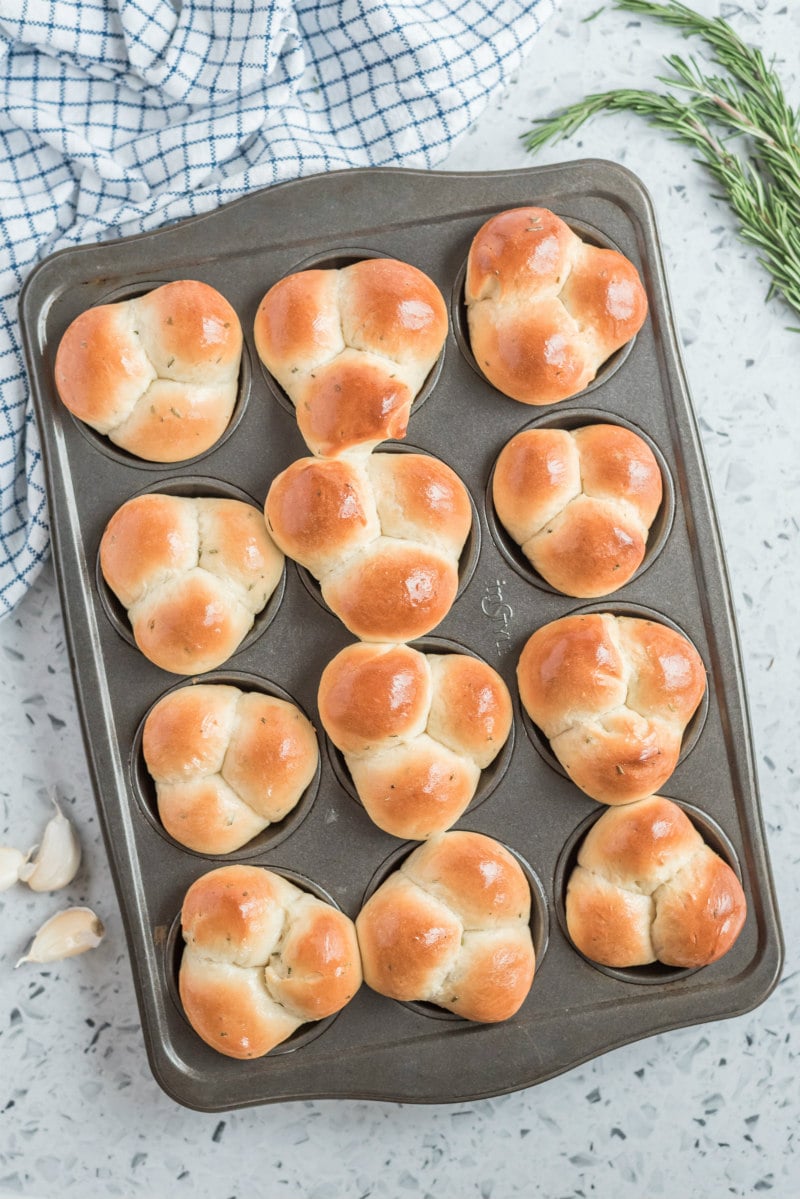
Into the oven they go for about 12 minutes.
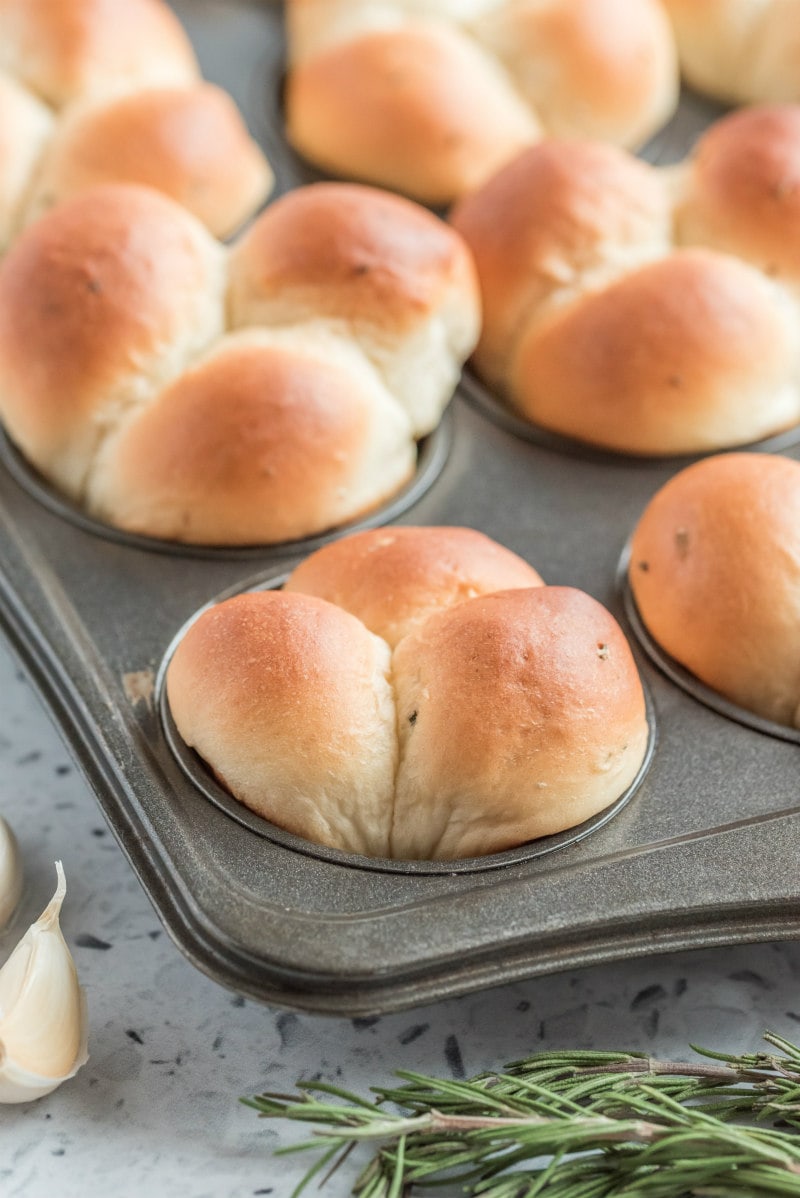
They rise nicely when they’re baking. And they look so pretty and perfect!
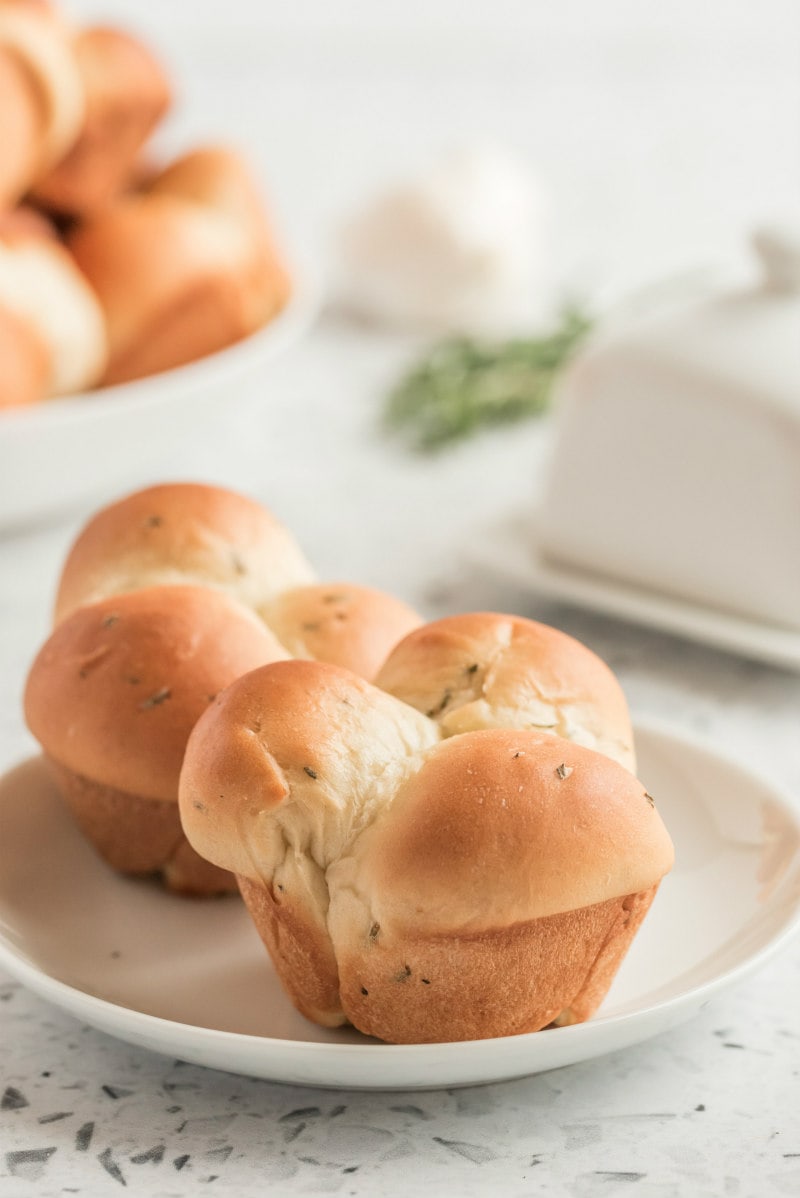
Make ahead tips:
These rolls freeze well. Bake, cool completely, wrap in heavy-duty foil, and freeze for up to a month. Thaw completely, and reheat in foil at 375 degrees F. for 15 minutes or until warm.
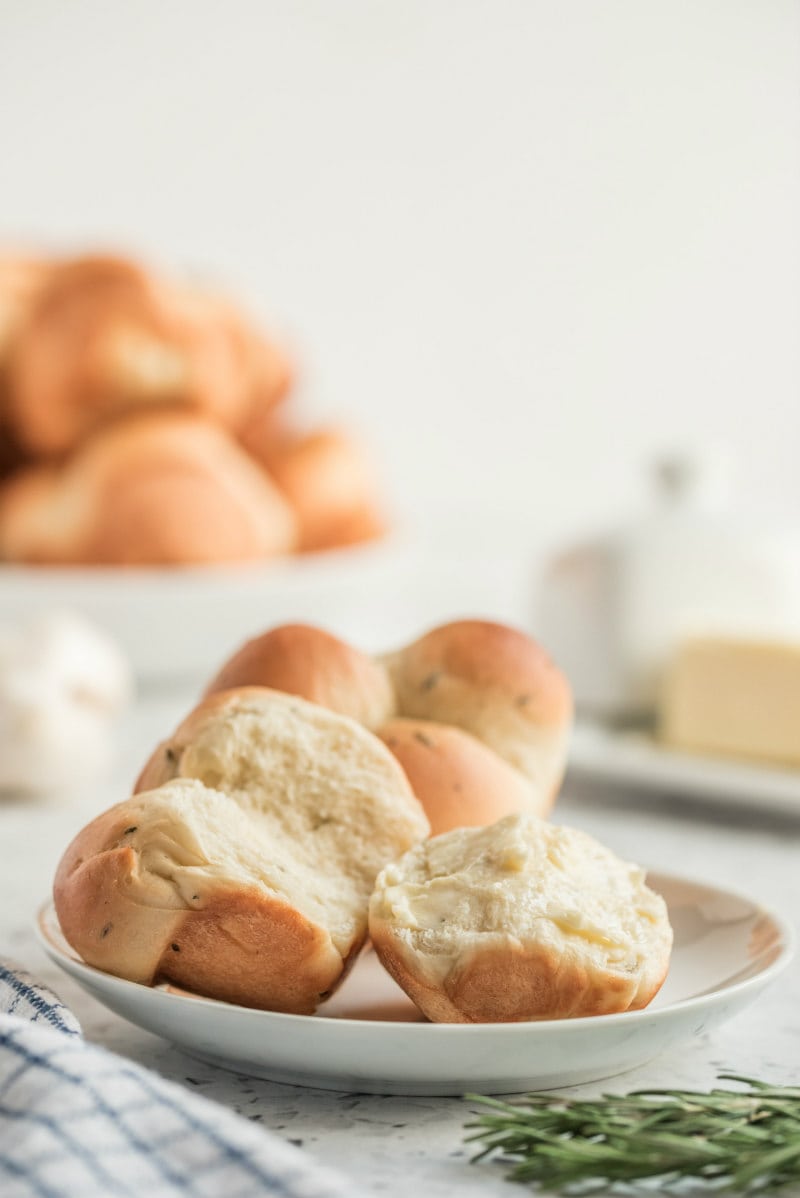
The fun thing about these rolls is that they pull part so easily, so they’re easy to eat. Rub a little butter on each section, and enjoy!
Here are a few more recipes for rolls that you might like to try:
- Easy Dinner Rolls
- Parker House Rolls
- Soft Yeast Rolls
- Crescent Dinner Rolls
- Texas Roadhouse Rolls
- Flaky Dinner Rolls
- Pumpkin Dinner Rolls
- Olive Oil and Rosemary Rolls
If you happen to be following the Weight Watchers WW plan, you’ll find a link to the WW Points on the recipe card below.
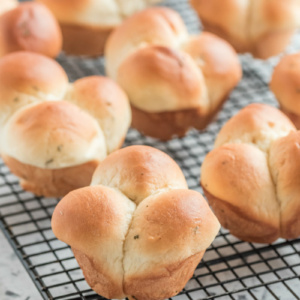
Roasted Garlic and Rosemary Cloverleaf Rolls
Ingredients
- 1 whole garlic head
- One .25-ounce envelope yeast (or 2¼ teaspoons)
- 1 cup warm 2% milk (100 to 110 degrees F)
- 3⅓ cups all purpose flour, divided
- 2 tablespoons butter, softened
- 2 tablespoons granulated white sugar
- 1 teaspoon salt
- 1 large egg
- 1 tablespoon finely chopped fresh rosemary
- 1 tablespoon melted butter, for brushing the top
Instructions
- Preheat the oven to 350°F.
ROAST THE GARLIC:
- Remove the white papery skin from the garlic head (do not peel or separate the cloves). Wrap the head in foil. Bake for 1 hour; cool slightly. Separate the garlic cloves; squeeze to extract the garlic pulp. Discard the skins.
PREPARE THE DOUGH:
- In a large bowl, dissolve the yeast in milk; let stand 5 minutes. Add the garlic pulp. Lightly spoon the flour into dry measuring cups; level with a knife. Add 1 cup of flour, 2 tablespoons of butter, the sugar, salt, egg and rosemary; beat with a mixer at medium speed until combined. Add 2 cups flour, and beat until smooth. Turn the dough out onto a floured surface. Knead until smooth and elastic (about 8 minutes); add enough of the remaining flour, 1 tablespoon at a time, to prevent the dough from sticking to your hands (the dough will feel tacky). If you have a large mixer with a dough hook, you may use that to do your kneading for you.
- Place the dough in a large bowl coated with cooking spray, turning to coat the top of the dough. Cover loosely with a clean dish towel and let rise in a warm place (85°F.), free from drafts, 1 hour or so until doubled in size. (Gently press two fingers into the dough. If an indentation remains, the dough has risen enough.)
- Punch the dough down. Divide the dough into 12 equal portions. Divide each portion into 3 pieces, and shape each piece into a ball. Coat 12 muffin cups with cooking spray; place 3 dough balls in each muffin cup. Cover and let rise in a warm place (85°F), free from drafts, 30 minutes or until doubled in size.
- Preheat the oven to 400°F.
- Uncover the pan of dough rolls, and brush the tops with 1 tablespoon melted butter. Bake for 12 minutes or until browned. Remove the rolls from the pans; serve warm.
Notes
- FREEZING INSTRUCTIONS: These rolls freeze well. Bake, cool completely, wrap in heavy-duty foil, and freeze for up to a month. Thaw completely, and reheat in foil at 375°F. for 15 minutes or until warm.
- TIP FOR RISING: If you're in need of a warm place for rising, turn your oven on to 400°F. for 1 minute. Turn the oven light on too. Then turn off the oven (leave the light on) and place your rolls inside the warmed oven for rising. The light keeps it just warm enough for a good rise.
Nutrition
Nutrition information is automatically calculated, so should only be used as an approximation.
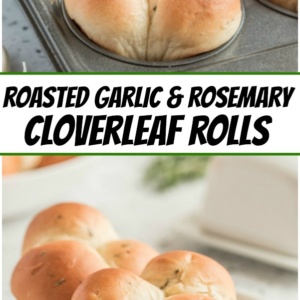
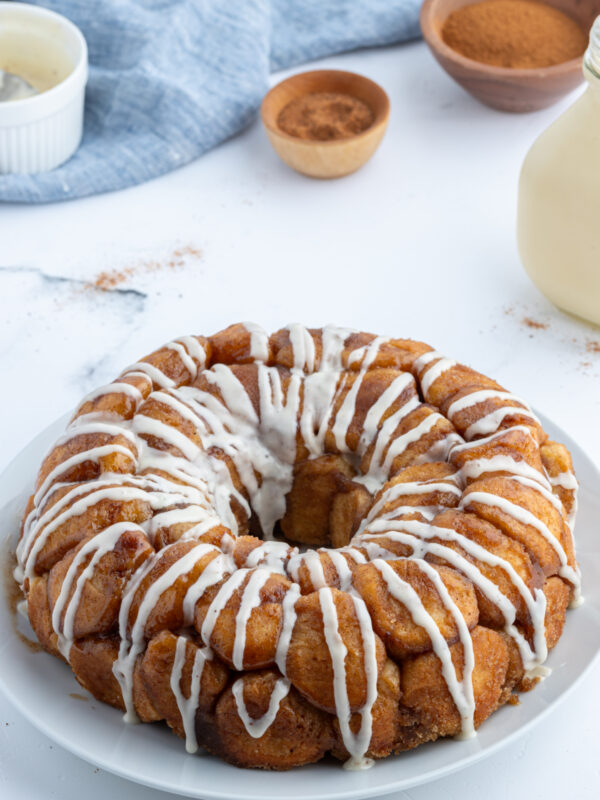
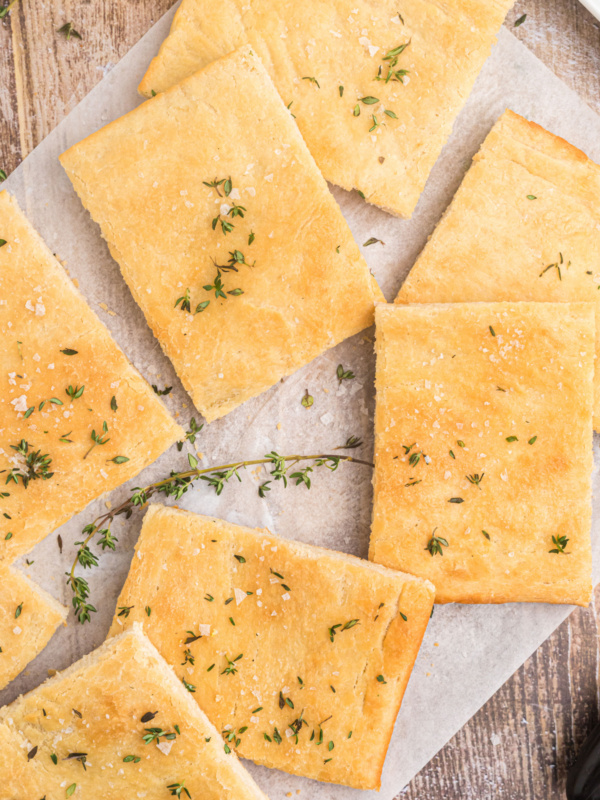
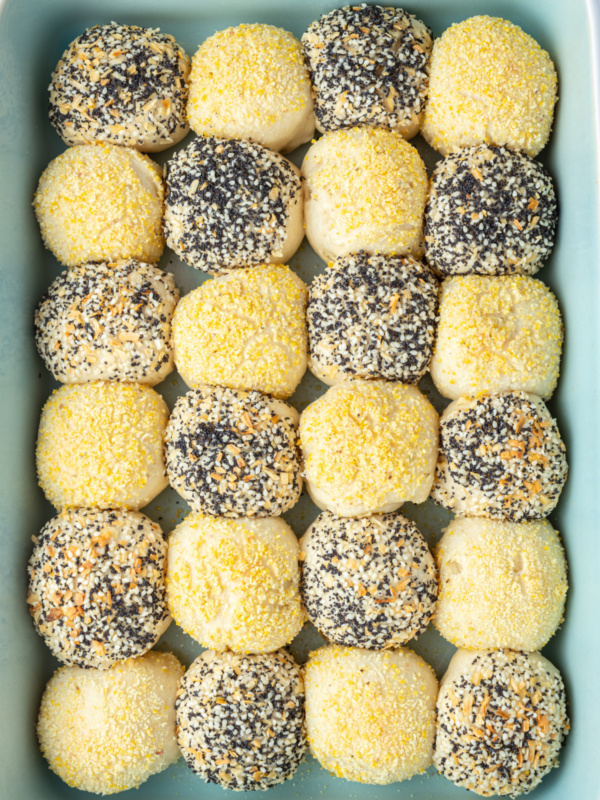
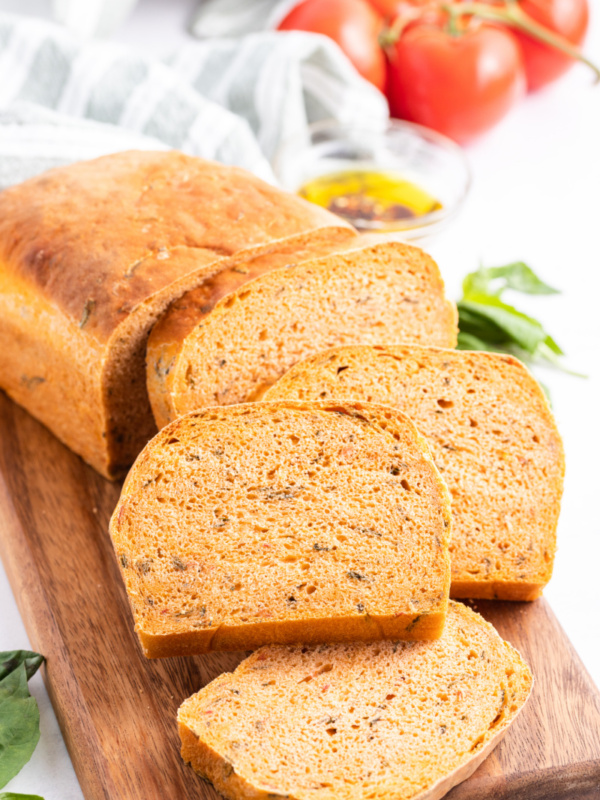









Hi
What type of yeast did you use in this recipe? Also, can I use Whole milk instead of 2% milk.